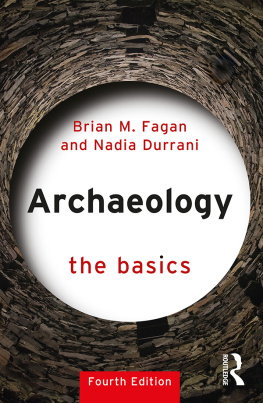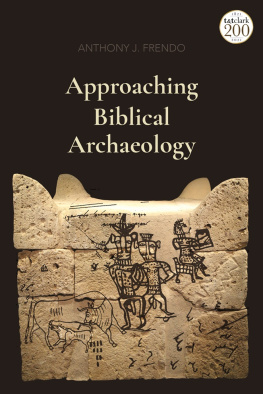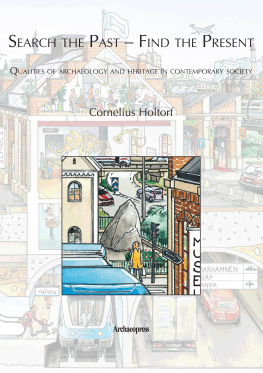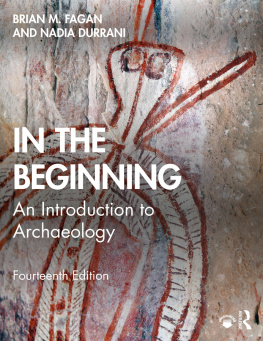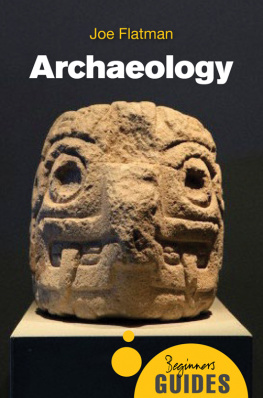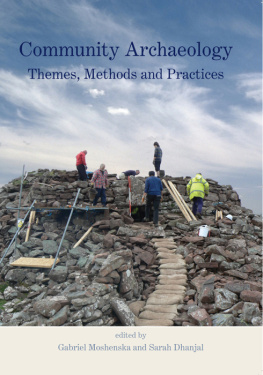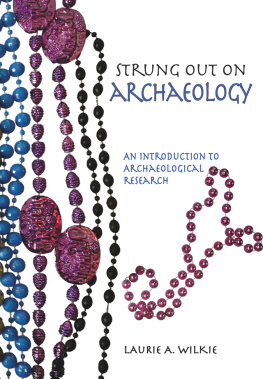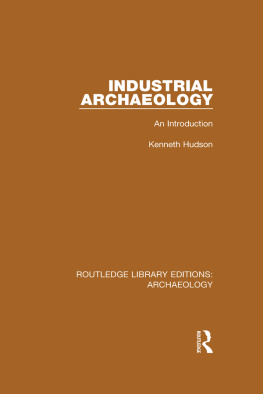As computing becomes increasingly essential to the work of the archaeologist, archeologists require a clear understanding of the impact of information technology upon their discipline.
This non-technical introductory volume discusses and explains the influence of computers on all aspects of archaeological research and interpretation, from survey, excavation and landscape to museums, education and communicating the past. The author meets the need of the archaeologist to keep abreast of how computers can assist at all stages of archaeological research and data analysis.
Theoretical information, focusing on Geographical Information Systems, for example, is presented through description of archaeological processes, and is consistently practical and free from jargon. The author acknowledges the problem of obsolescence in computing and presents archaeological technology as an on-going, constantly changing process rather than as a final, achievable state. The book will thus remain relevant through future advances in technology and informative about the general principles of, and the issues arising from, the relationship between computers and archaeology.
USING COMPUTERS IN
ARCHAEOLOGY
Towards virtual pasts
Gary Lock
LONDON AND NEW YORK
First published 2003
by Routledge
11 New Fetter Lane, London EC4P 4EE
Simultaneously published in the USA and Canada
by Routledge
29 West 35th Street, New York, NY 10001
Routledge is an imprint of the Taylor & Francis Group
This edition published in the Taylor & Francis e-Library, 2003.
2003 Gary Lock
All rights reserved. No part of this book may be reprinted or reproduced or utilized in any form or by any electronic, mechanical, or other means, now known or hereafter invented, including photocopying and recording, or in any information storage or retrieval system, without permission in writing from the publishers.
British Library Cataloguing in Publication Data
A catalogue record for this book is available from the British Library
Library of Congress Cataloging in Publication Data
Lock, G. R. (Gary R.)
Using computers in archaeology: towards virtual pasts / Gary Lock.
p.cm.
1. ArchaeologyData processing. 2. ArchaeologyInformation technology. 3. Geographic information systems. I. Title.
CC80.4.L63 2003
930.1028dc21 2002035669
ISBN 0-203-45107-4 Master e-book ISBN
ISBN 0-203-45698-X (Adobe eReader Format)
ISBN 0-415-16620-9 (hbk)
ISBN 0-415-16770-1 (pbk)
IN MEMORY OF DICK SPICER,
A GOOD FRIEND AND A
STIMULATING COLLEAGUE
ILLUSTRATIONS
Figures
Table
Infoboxes
PREFACE
Writing a book about computing almost inevitably includes the inherent danger of built-in obsolescence, especially one that takes several years to mature as this one has. I first started thinking about the need for an introductory text on archaeological computing in the early 1990s when faced with teaching the subject to undergraduates. At that time the literature was difficult to access, with the proceedings of the annual Computer Applications in Archaeology conference, a text book that was dating rapidly, and one or two journals providing the bulk of the material. I felt that what was needed was a book that approached the subject according to archaeological interests rather than computing categories such as types of software. I still feel that the best way into the subject is through the archaeology, hence the chapters here are about survey, excavation and other topics that will resonate with archaeologists, rather than topics such as databases and statistics.
It is my contention that archaeological computing is not something that is ever complete but rather is a process. Individuals and organisations never reach a state of being computerised but are constantly rethinking and reworking their use of computers and specific applications. This has enabled me to, indeed it has dictated that I must, take a historical approach to the different areas of computer usage in archaeology. There is little point in trying to be entirely current, and if I were to try then by the time this book appears many of the details would be outdated. Looking back through past papers of the CAA proceedings it is obvious that search applications of just a few years ago are now standard practice for many archaeologists. To avoid the obsolescence problem I have attempted to focus on issues and on how the historical development of issues has been influenced by the use of computers. This has resulted in some rather old references in certain places which may seem odd but are there to inform the historical process rather than to give an impression of what is current. Excavation recording and Cultural Resource Management systems, for example, are just two areas where the restrictions and potential of computers and the needs and intentions of system developers and users have produced an on-going dialectic over many years.
I have also tried to introduce some of the tensions that I perceive there to be between the theory and practice of archaeology and how, if at all, using computers can influence those debates and has done so. Computers not only change the way we do things, but more importantly change the way we think about what we do and why we do it. This influences, and is influenced by, archaeological theory. It is not a coincidence, for example, that recent attempts at post-processually informed excavation recording and interpretation have been based not just on innovative thinking but also on computer functionality (Hodder 1999; Beck 2000).
A couple of the books devices need some clarification:
Websites
The referencing of websites can be a problem because they can disappear or change radically, sometimes overnight. I have tried to cite website addresses as an adjunct to traditional references rather than as replacements for them, and also to use sites that I estimate to be secure, reputable organisations, for example.
Infoboxes
These supply extra information to the text on specific topics. They are not meant to be read sequentially with the text and may be useful on their own.
ACKNOWLEDGEMENTS
I owe a great debt of gratitude to many people who have helped formulate my knowledge of the use of computers in archaeology over many years. In the beginning was John Wilcock and the Research Centre for Computer Archaeology at Staffordshire Polytechnic. The early 1980s were exciting times when the potential of computers was being explored in many areas and, as one of the few groups of archaeologists working in this area, we felt charged with a mission (which is on-going). Many of the people I worked with at Stafford have remained friends and several have gone on to become important figures in the world of archaeological computing. My thanks to all of them, especially Dick Spicer, Mike Fletcher, Paul Reilly, Jeremy Huggett, Kath Baker, Peter Main, Malcolm Cooper, Julian Richards and Nick Ryan.


